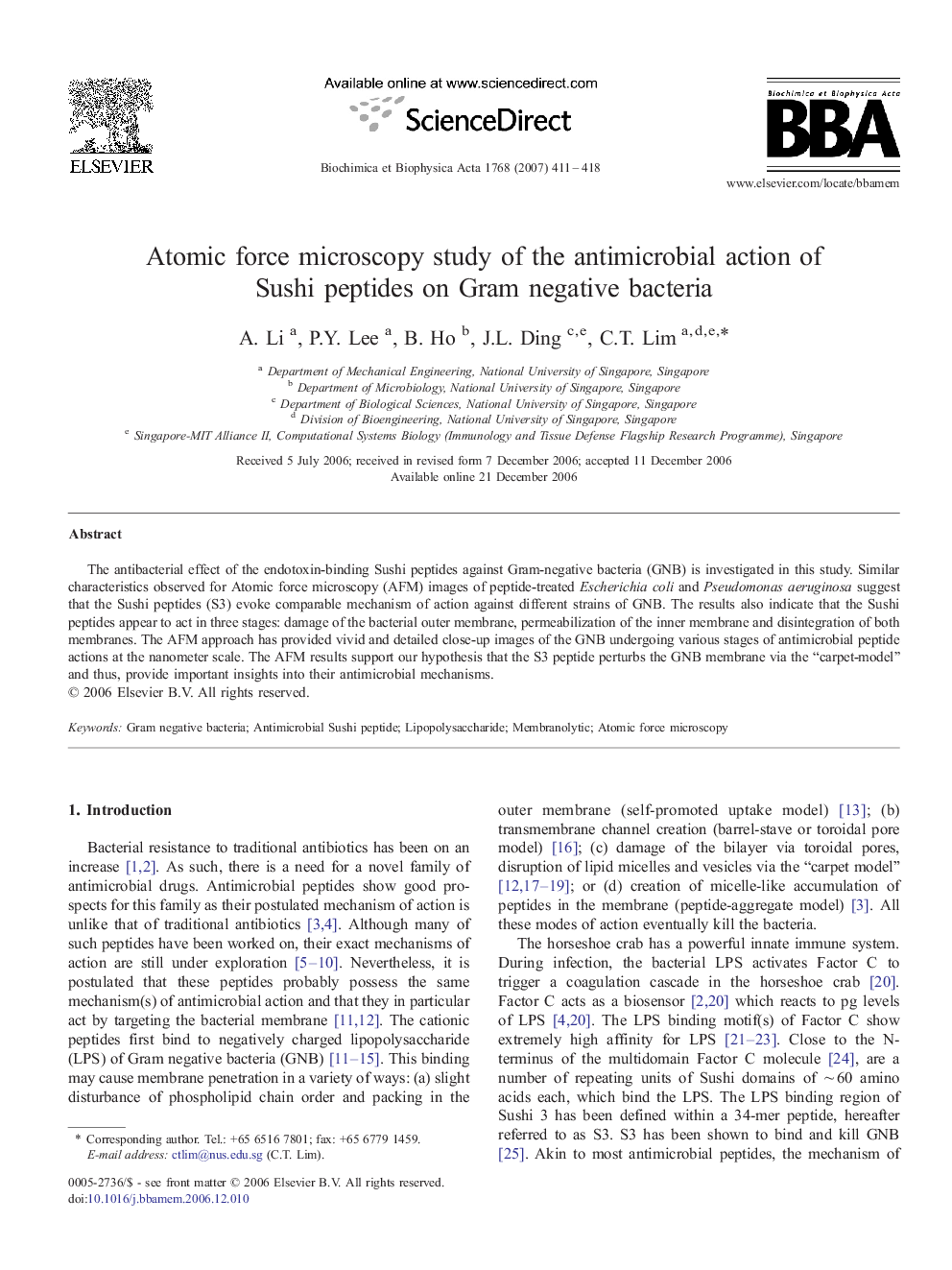| Article ID | Journal | Published Year | Pages | File Type |
|---|---|---|---|---|
| 1945839 | Biochimica et Biophysica Acta (BBA) - Biomembranes | 2007 | 8 Pages |
The antibacterial effect of the endotoxin-binding Sushi peptides against Gram-negative bacteria (GNB) is investigated in this study. Similar characteristics observed for Atomic force microscopy (AFM) images of peptide-treated Escherichia coli and Pseudomonas aeruginosa suggest that the Sushi peptides (S3) evoke comparable mechanism of action against different strains of GNB. The results also indicate that the Sushi peptides appear to act in three stages: damage of the bacterial outer membrane, permeabilization of the inner membrane and disintegration of both membranes. The AFM approach has provided vivid and detailed close-up images of the GNB undergoing various stages of antimicrobial peptide actions at the nanometer scale. The AFM results support our hypothesis that the S3 peptide perturbs the GNB membrane via the “carpet-model” and thus, provide important insights into their antimicrobial mechanisms.
